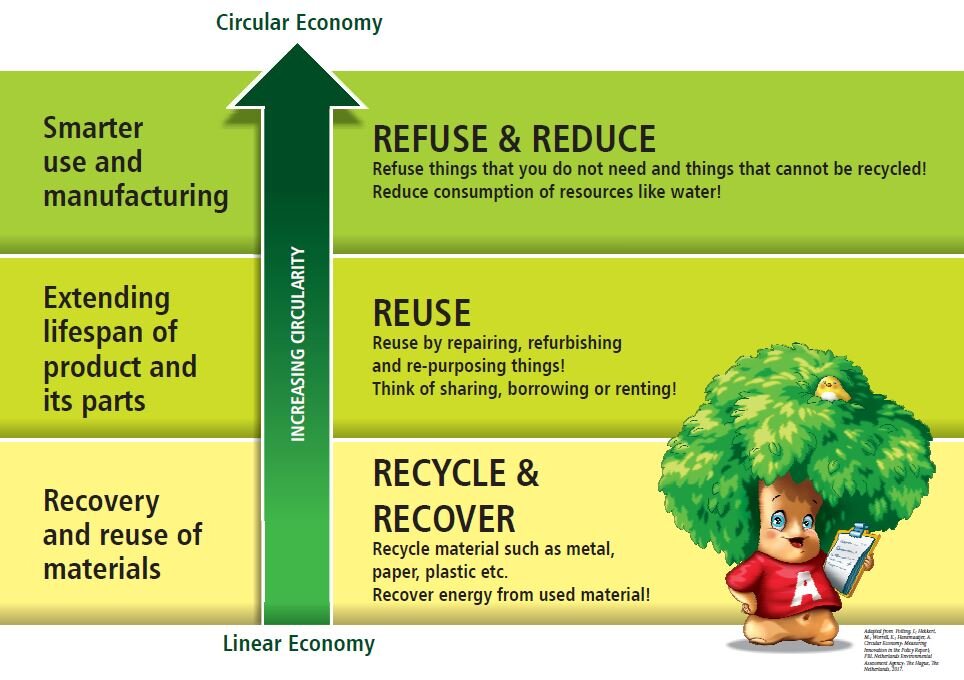Moving from Linear to Circular Economy
Circular economy is based on three main principles:
“designing out” waste or simply rework the systems to not produce waste. This is achieved by design of product or services that are durable, uses recyclable material, and are repairable;
separating the biological (residual resources that are non-toxic and can be safely returned to the biosphere often organic like paper and wood) from technical (unsuitable for biosphere systems like metals and plastics) nutrients where the former are returned back to the biosphere, and the latter are reused indefinitely. This requires our participation for example in the segregation of waste at home and composting green waste and putting other waste for recycling;
using renewable energy to decrease dependence on coal and other fossil fuels and reduce loss and vulnerabilities to failure by producing locally.
Key Literacy Outcomes
Take actions that reduces consumption
Take actions that support resilience of Earth Systems
Take actions for waste minimization
Support sustainable products and services as a consumer
Increase awareness of actions that supports sustainability
Advancing Circular Economy of Paper
Paper is an excellent example to see the strategies that can be adopted for increasing Circularity. The core idea is to see that there is no waste!


